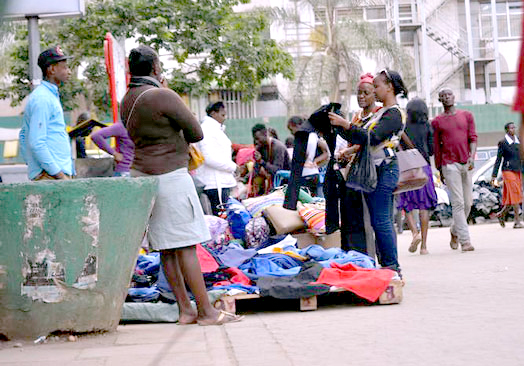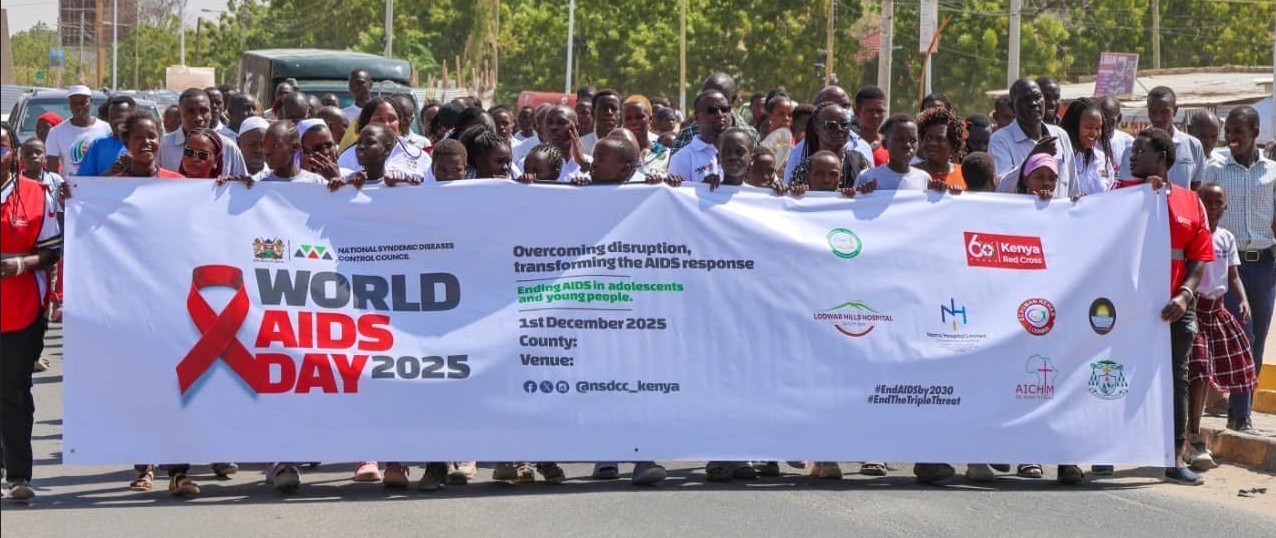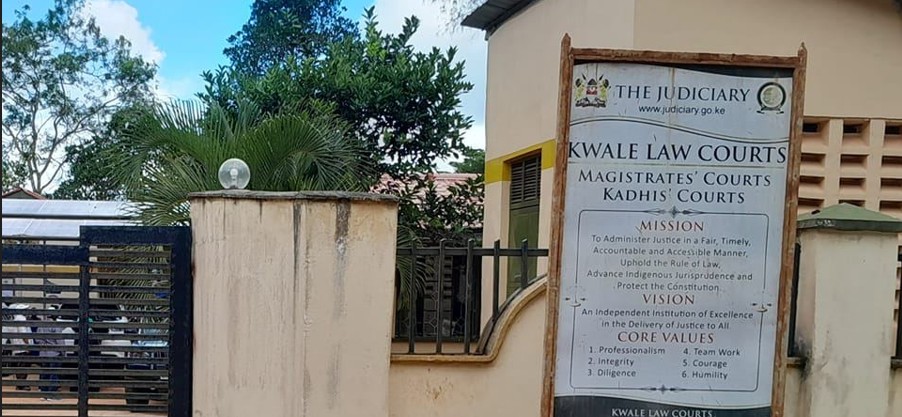Uncontrolled hawking makes Nairobi streets hard to navigate, chokes other businesses

Tom Mboya Street has turned into a hot spot for hawking, with reports of stealing, pickpocketing, and other crimes
"Nairobi will be a city of order and dignity. There will be no hawking on roads and that is not negotiable."
These were the words of Nairobi Governor Johnson Sakaja on October 25, 2023, when he ordered a crackdown and banned hawking in Nairobi’s central business district (CBD) pavements.
More To Read
- Governor Sakaja unveils six-borough structure to enhance service delivery
- Sakaja’s loan request for salaries draws ire from Nairobi MCAs for lack of details
- Governor Johnson Sakaja appeals for funds to sustain ‘Dishi na County’
- Bunge La Mwananchi, activists move to court to block Sakaja-National Government deal
- Should Nairobi be a county? The capital city's management crisis that refuses to go away
- High Court dismisses Sakaja’s bid to gag media over protest coverage
Nairobi, once known as the 'green city in the sun', has lost its charm due to the huge number of hawkers who have turned the streets into a headache for residents.
Every corner, from roads and walkways to streets and pavements, is crowded with informal traders blocking the way.
Hawkers sell everything from electronics and food produce to cosmetics, clothes, shoes, phone accessories, and toys, making the city centre a busy marketplace.
In 1954, the only type of street trading that was allowed was selling newspapers, and even that was limited.
By 1984, nearly 20,000 hawkers had flooded the city, according to the Nairobi City Council. Today, that number has doubled to around 40,000, with over 5,000 hawkers selling their wares in the CBD alone every day.
As early as 10 am, hawkers set up shop along various streets, lanes, and avenues in the CBD. They block roads and pavements, crowd out pedestrians, create a garbage menace, and hinder legitimate businesses.
On Latema and River roads, hawkers are there from mid-morning to evening, always watching out for the county enforcement officers. It's a constant cat-and-mouse game between hawkers and the authorities along Ronald Ngala and Mfangano streets. Tom Mboya Street has become a hot spot for hawking, with reports of stealing, pickpocketing, and other crimes.
Despite this, many people still buy from hawkers. Over the years, these 'CBD owners' have shown they can't be evicted or moved, no matter how hard the county government tries. Heavy-handed roundups don't work as the hawkers just keep coming back.
Sakaja's grand plan
When he was elected into office in August 2022, Governor Sakaja planned to do the impossible by relocating the hawkers from uptown. In his manifesto, he said his administration would not chase hawkers from their bases of operations but instead allocate them places to operate from.
This was not only meant to decongest the pavements and streets but also give the hawkers a specific working place.
In his first budget of Sh42.3 billion, Sh100 million was allocated for the relocation of hawkers from the main streets.
However, two years down the line, hawkers are still blocking roads and pavements, crowding out pedestrians, contributing to the garbage menace, and blocking business entrances, thus denying legitimate traders the chance to trade.
In May 2023, Sakaja constituted a multi-sectoral team tasked with finding alternative areas for hawkers so that the CBD decongestion plans do not unnecessarily disrupt their businesses.
The team inspected various lanes in the lower CBD and has started demarcations as well as clearing dirt in the areas to make them habitable for trade.
Various lanes, including Turkana, Latema, Kirinyaga, Posta, and Sotik had already been painted for hawkers to be allocated spaces.
“We did public participation with the hawkers and the leadership in CBD. We have marked 29 streets and back lanes that we are already preparing, Dubois Road is the first one which will be the model street,” Sakaja said then.
But hawkers still flood the streets of the CBD, with mixed reactions to Sakaja's plan.
“I knew this plan would not work because we were never involved in the planning,” said Miriam Wangechi who sells phone accessories.
Peter Chege, a fruit vendor, said every hawker has specific target customers, and relocating them to back streets would affect their businesses.
“It was a good plan by the governor but, unfortunately, it cannot work in this city,” another hawker, Vincent Okumu told The Eastleigh Voice.
Cartels blamed
In Sakaja's plan, hawkers were to be allowed to operate for five hours only in the CBD — from 5 pm to 10 pm. They were expected to ensure that their areas of operation were always clean and litter-free.
Sakaja said the size of each slot would be 3 by 3 feet with clear and adequate space left along the street and in between pallets for pedestrians.
This was not the first time that City Hall has tried to regulate hawkers. Other previous attempts have failed.
Former Nairobi governor Evans Kidero blamed cartels at City Hall for the hawker troubles. He accused former councillors and members of parliament of pushing for their return to the CBD every time the county government removed them from the streets.
His successor, Mike Sonko, promised to organise hawkers within the first 100 days of his administration. The plan was to register all the hawkers, small-scale business owners, and traders to recognise, protect, and enable them to operate in the city.
The strategy backfired and hawkers have ever since remained troublesome and a permanent fixture on Nairobi streets.
The defunct Nairobi Metropolitan Services (NMS) also attempted to control the hawkers.
Former NMS director-general Mohammed Badi said his team was readying a building near Utalii College on Thika Road as a hawkers' permanent working station. The building was also to host mechanics.
This planned relocation never happened.
Legislative efforts
In 2020, a new law enacted by the Nairobi County Assembly was seen as a solution to the hawkers' problem.
The Nairobi City County Pop-up Markets and Street Vendors Act, 2019, sought to streamline how hawkers conduct their business in the capital city. The law was passed on February 12, 2021.
It said that the regulation of the markets would be vested in a Pop-Up Markets Department domiciled in the executive wing of City Hall, whose mandate would be to regulate when and where the markets can operate.
The department was to develop market rules, ensure maintenance of markets, provide a strategic approach to develop trade in the city, liaise with other authorised officers to ensure effective revenue collection, advise the county government on all matters about pop-up markets and street vendors, supervise sanitation work, and collect and utilise data relating to pop-up markets and street vendors in the county.
However, the law was never implemented.
Top Stories Today













































